Kuri Gohan is a rice dish that allows you to enjoy the aroma, sweetness, and texture of chestnuts. With just simple seasoning, you can fully appreciate the delicate flavor of chestnuts along with the subtle essence of Japanese cuisine.
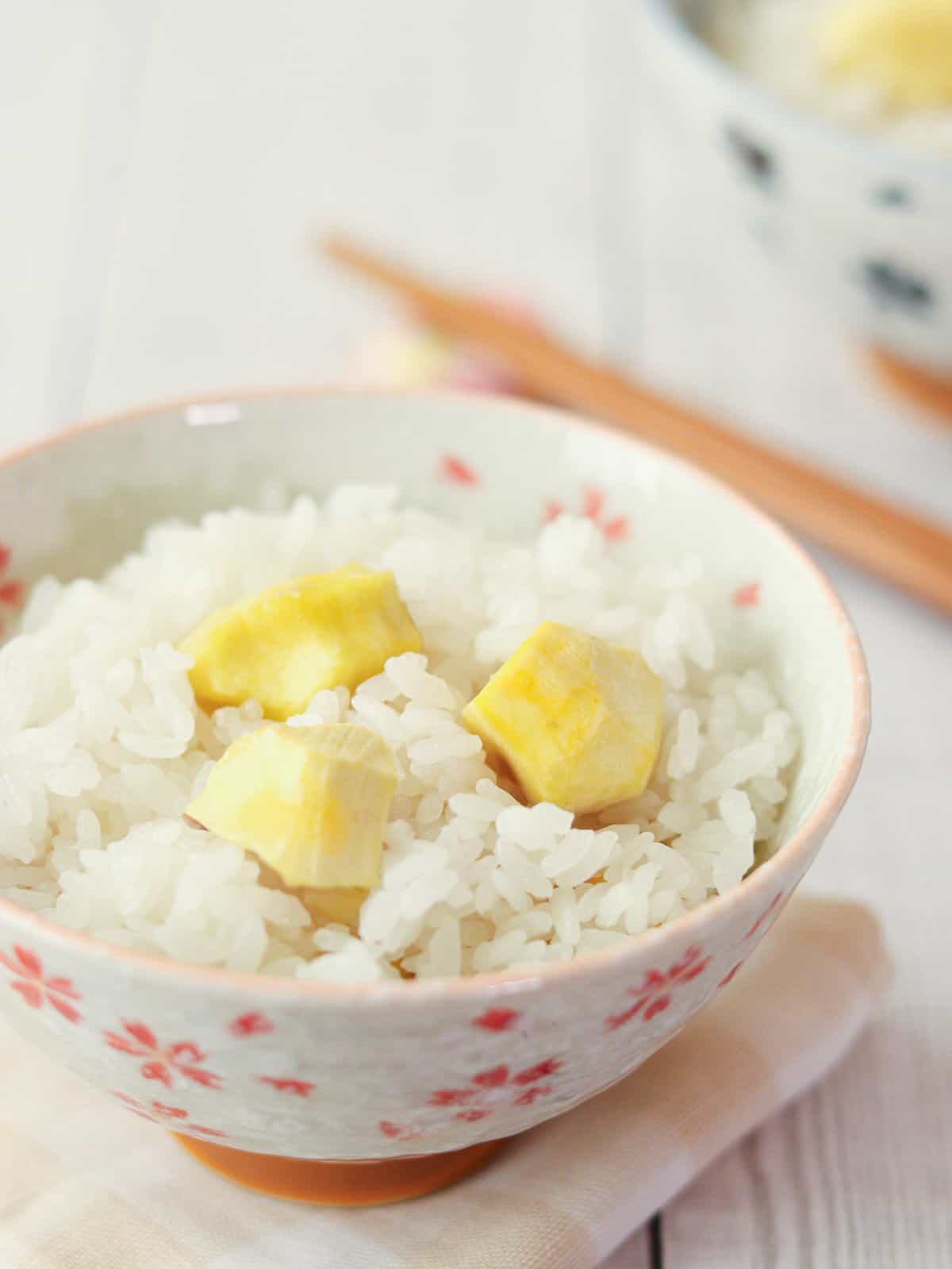
Jump to:
What is Kuri Gohan?
Kuri Gohan is a Japanese dish made by cooking chestnuts with rice. "Kuri" refers to chestnuts, and "Gohan" means rice. A small amount of sake and salt is usually added to enhance the flavor. While whole chestnuts are commonly used, you can also substitute them with commercially available peeled chestnuts or Kuri no Kanroni (Japanese candied chestnuts).
In Japan, there is a cultural tradition of cooking seasonal ingredients together with rice, and kuri gohan is a popular dish enjoyed during fall. It is served not only as an everyday meal but also on special occasions due to its exquisite appearance.
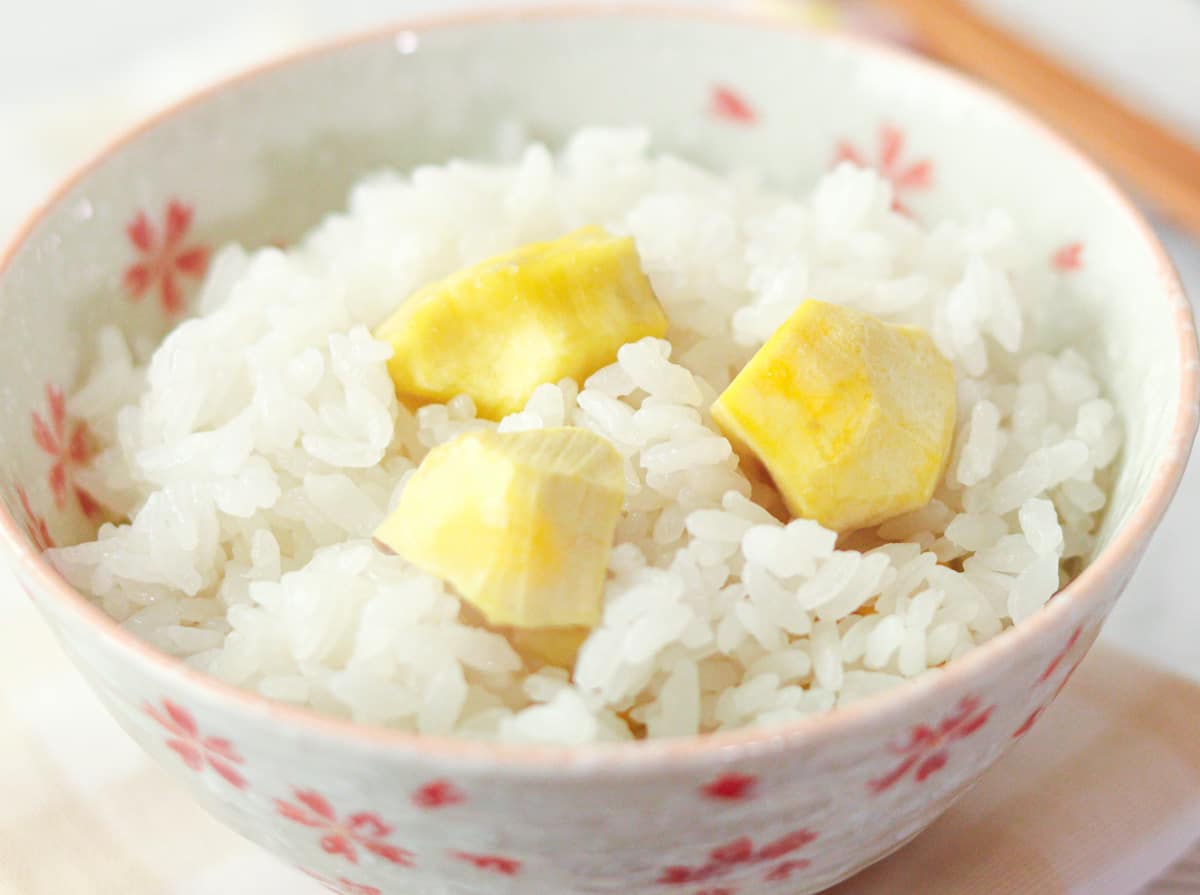
Preparation of whole chestnuts
When preparing this dish using whole chestnuts, there are three essential steps: peeling the outer shells, removing the inner skins, and eliminating the harsh aftertaste. Therefore, if you are planning to use a large quantity all at once, it is important to keep in mind that a significant amount of time and effort will be required.
While you can skip all of these steps by opting for commercially available peeled chestnuts, I still recommend using whole chestnuts, as they offer superior flavor.
Cooking tools
The tool you need to make this dish is the same as the one used to cook regular Japanese rice: a pot or a rice cooker.
In Japan, while most households have a rice cooker, it is less common outside of Japan, so I’m sharing a recipe using a pot here. Of course, you can also use a rice cooker; in that case, simply replace the pot with the rice cooker in the recipe.
To learn more about How to Cook Japanese Rice on the Stove, please refer to the linked page.
Optional additions
Kuri gohan typically consists of just rice and chestnuts (excluding seasonings). Even when additional ingredients are included, toasted sesame seeds are sometimes sprinkled to provide a textural accent. By refraining from adding extra ingredients, you can fully appreciate the essence of the chestnuts.
Seasonal Japanese rice dishes
In Japan, there are many types of cooked rice dishes made with fresh, seasonal ingredients. One representative rice dish in fall is kuri gohan, but there are also other seasonal varieties, such as mame gohan (green pea rice), corn rice, ginger rice, satsumaimo gohan (Japanese sweet potato rice), and kaki gohan (oyster rice), all prepared according to the season.
In traditional Japanese kaiseki restaurants, it is customary to serve a rice dish made with seasonal ingredients before dessert. If you have the opportunity to try kaiseki cuisine, pay attention to the ingredients used in the rice dishes—you will surely experience the essence of the season.
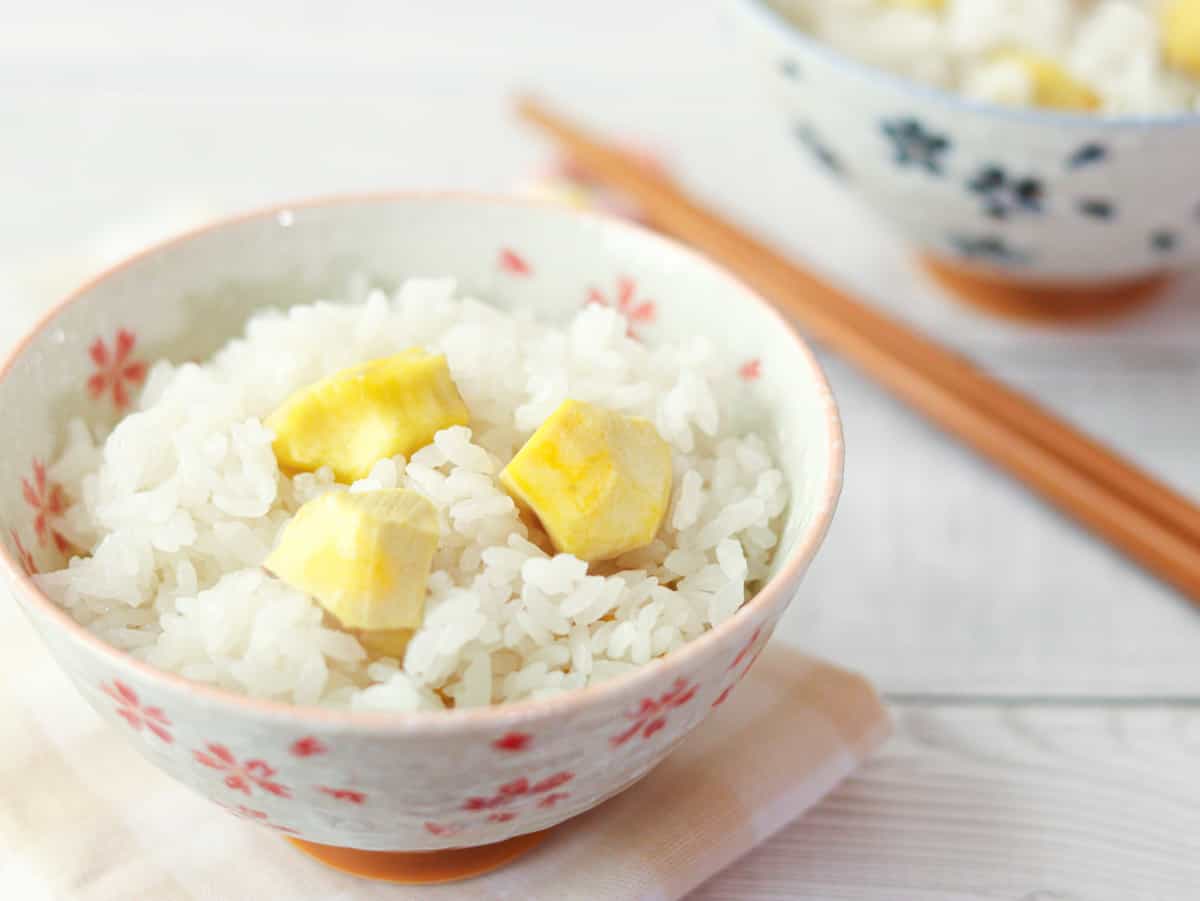
📋Step-by-step recipe
Ingredients
- 8 oz whole chestnuts (When using peeled chestnuts or kuri no kanroni, adjust the amount of whole chestnuts to 70%.)
- ¾ cup Japanese short-grain rice (1 rice cooker cup for 2 servings. If you replace 20% of it with Japanese glutinous rice, the grains will become stickier, resulting in a softer and chewier texture.)
- ⅚ cup water (for the rice)
- ½ Tbsp sake
- ½ tsp salt
Instructions
🕒 Total: 2 hrs 25 minsIf you are using peeled chestnuts or kuri no kanroni (Japanese candied chestnuts), start from step 4.
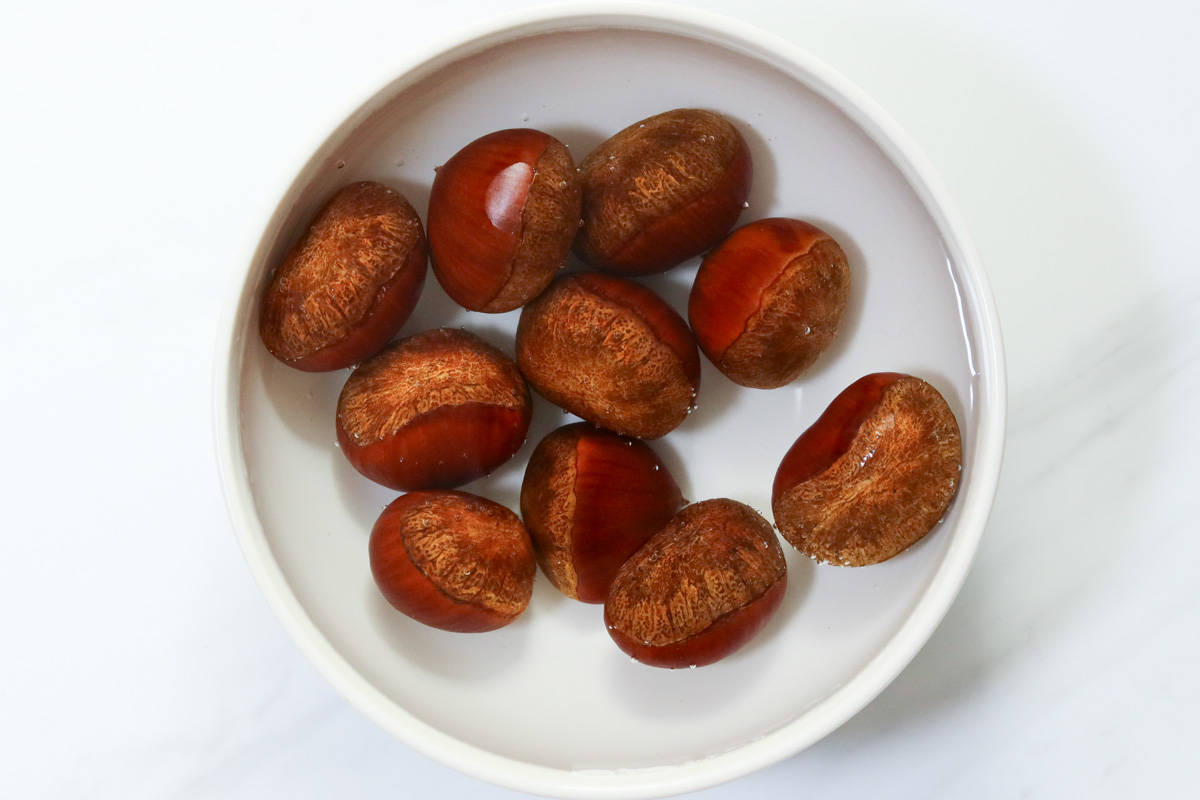
Step 1
Soak whole chestnuts in water for at least 1 hour, or in warm water at around 122℉ (50℃) for 20 minutes.
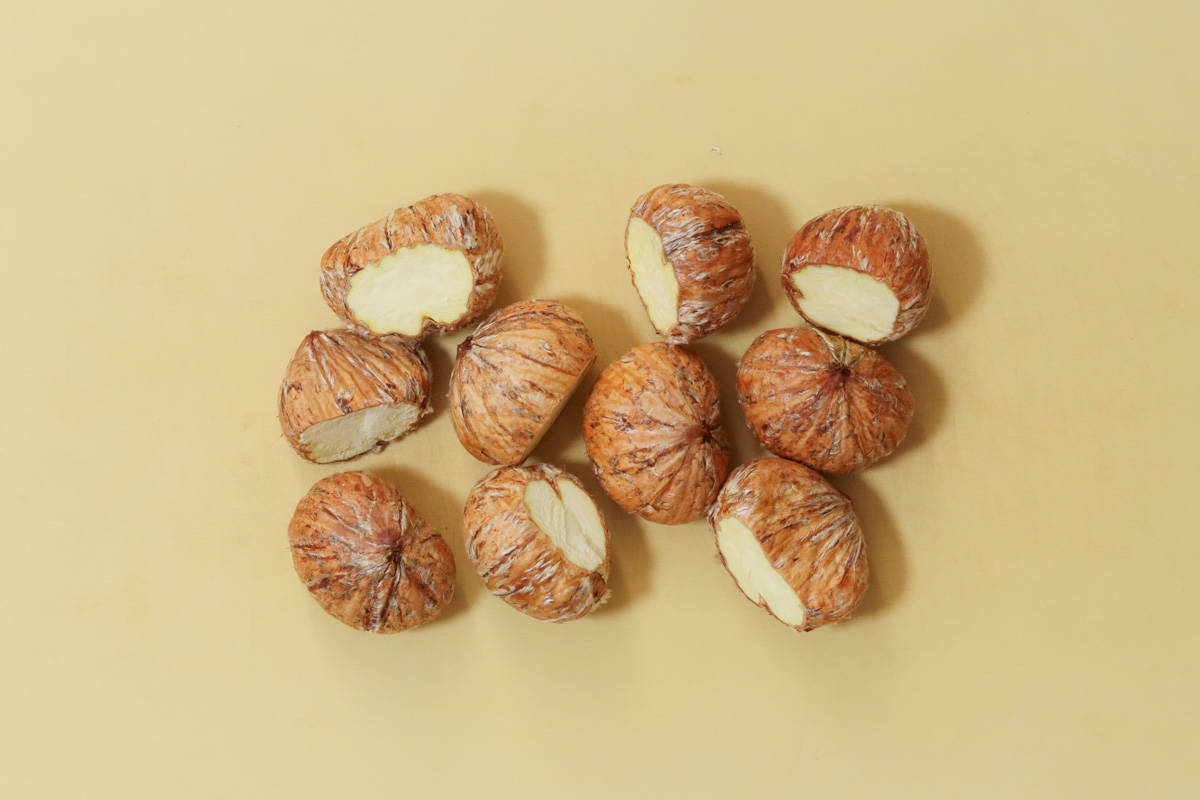
Step 2
Cut off the bottom part of the chestnuts and peel the outer shells.
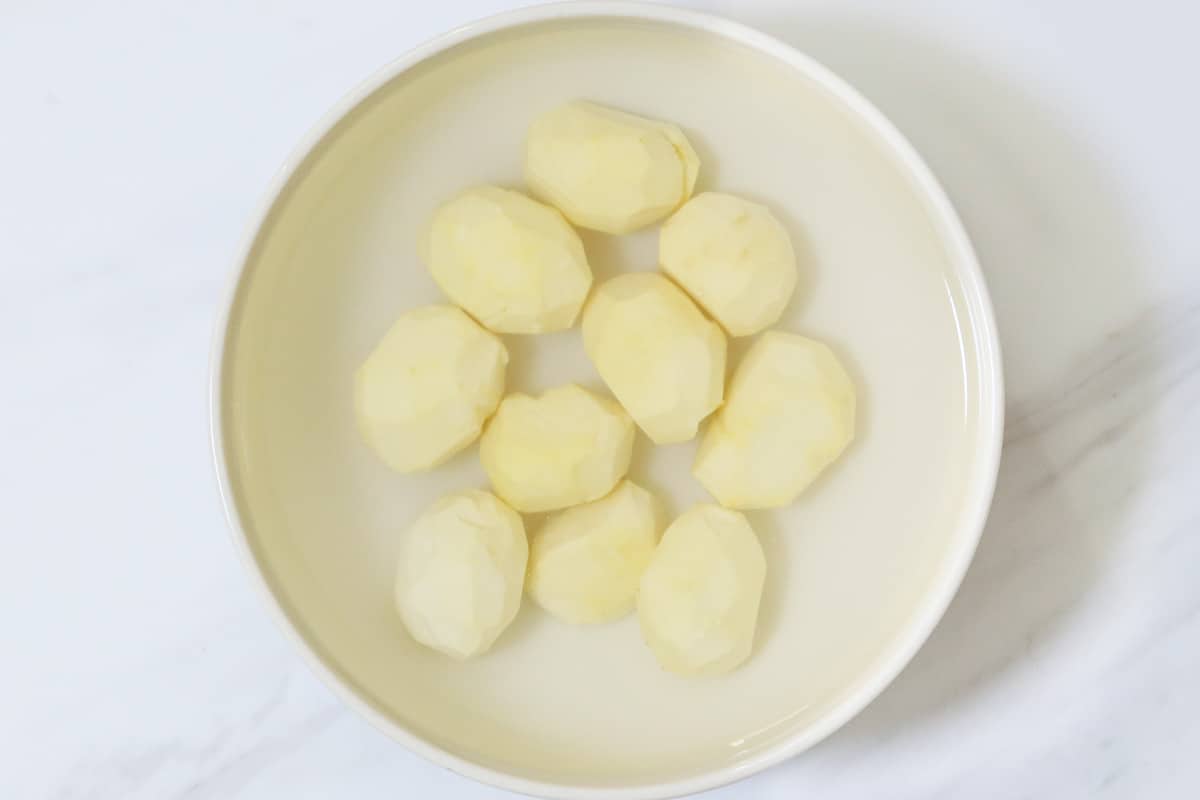
Step 3
Remove the inner skins from the chestnuts thoroughly with a knife. Fill a bowl with water and place the peeled chestnuts in it. Soak them for 30 minutes, changing the water when it becomes cloudy.
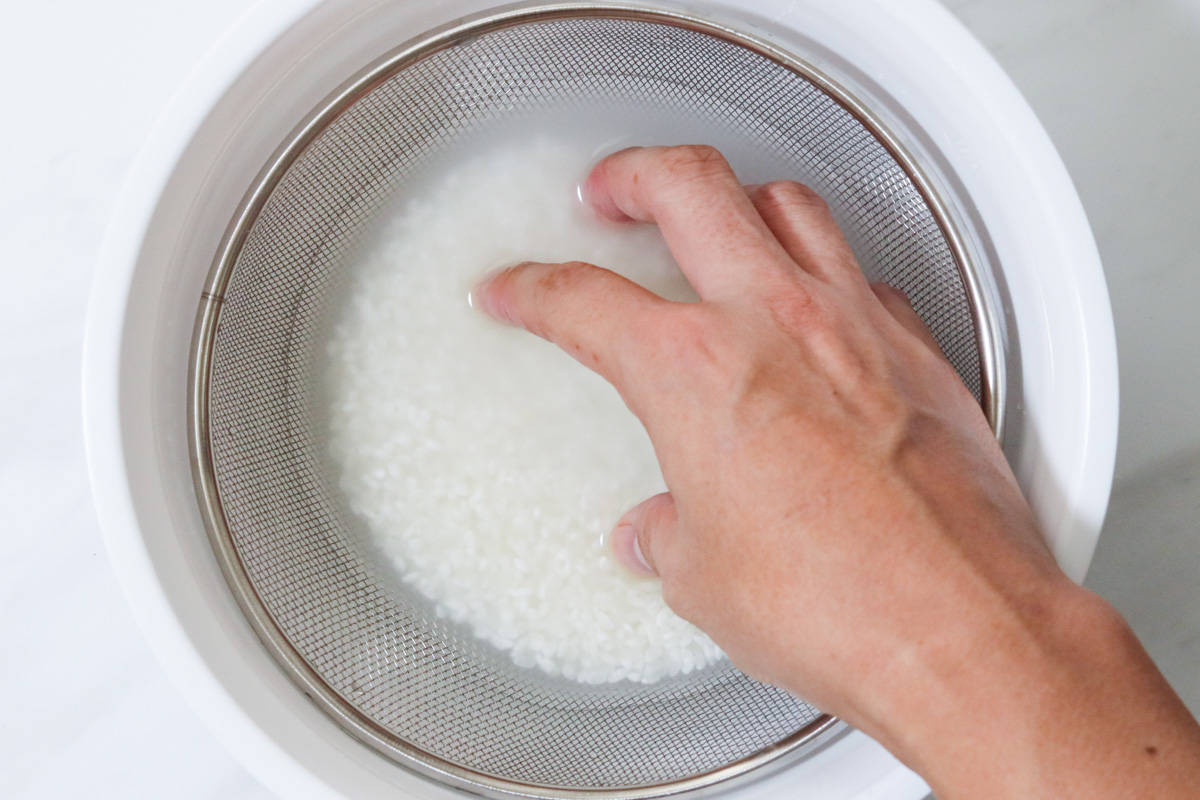
Step 4
Place a sieve over a bowl, add rice, and rinse it with water (not listed in the ingredients). Repeat this process several times, changing the water each time.
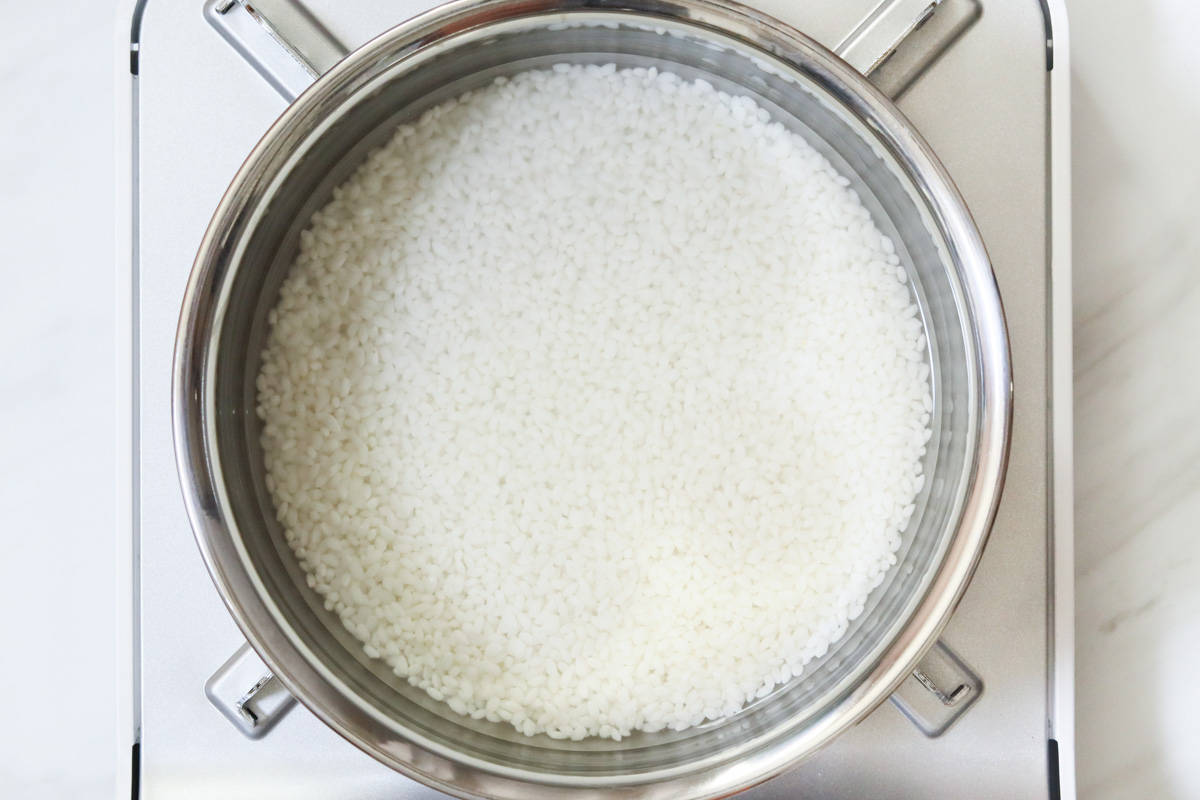
Step 5
Soak the rinsed rice in water (as specified in the recipe) in a pot for at least 30 minutes.
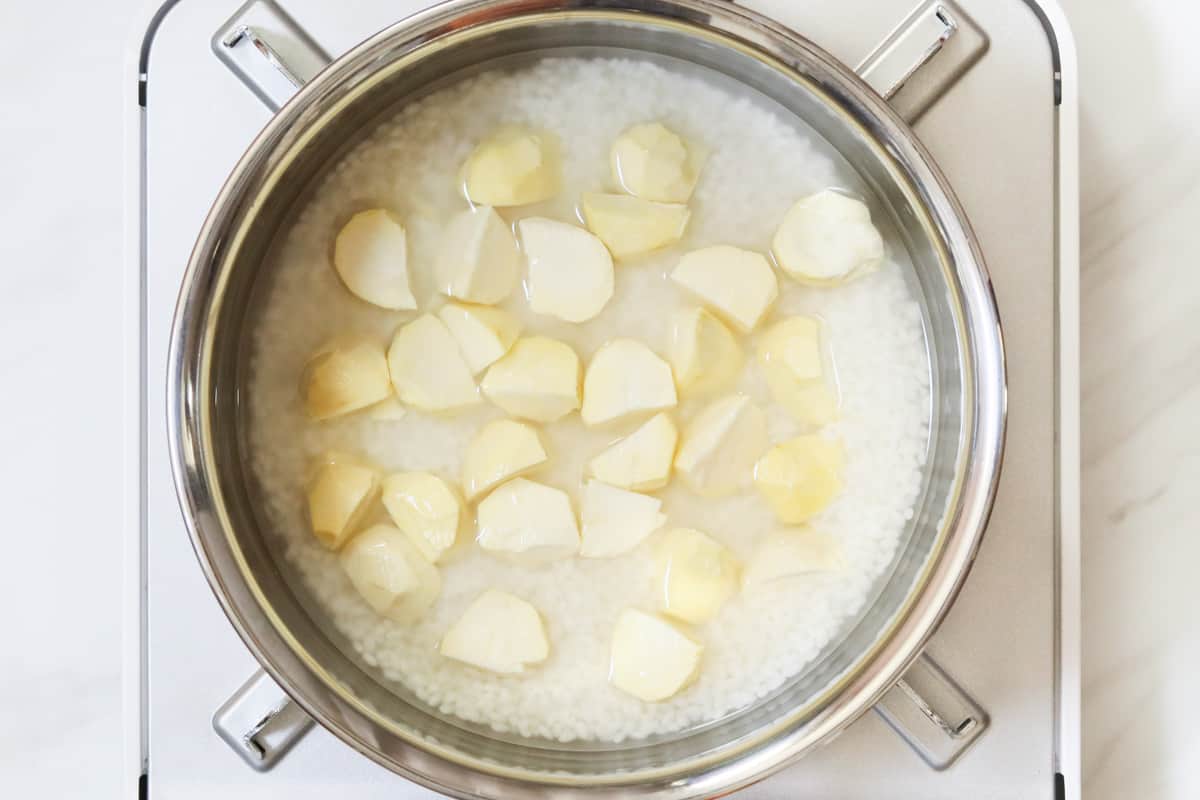
Step 6
Add sake and salt to the pot and mix. Cut the chestnuts into bite-sized pieces and place them evenly on top of the rice.
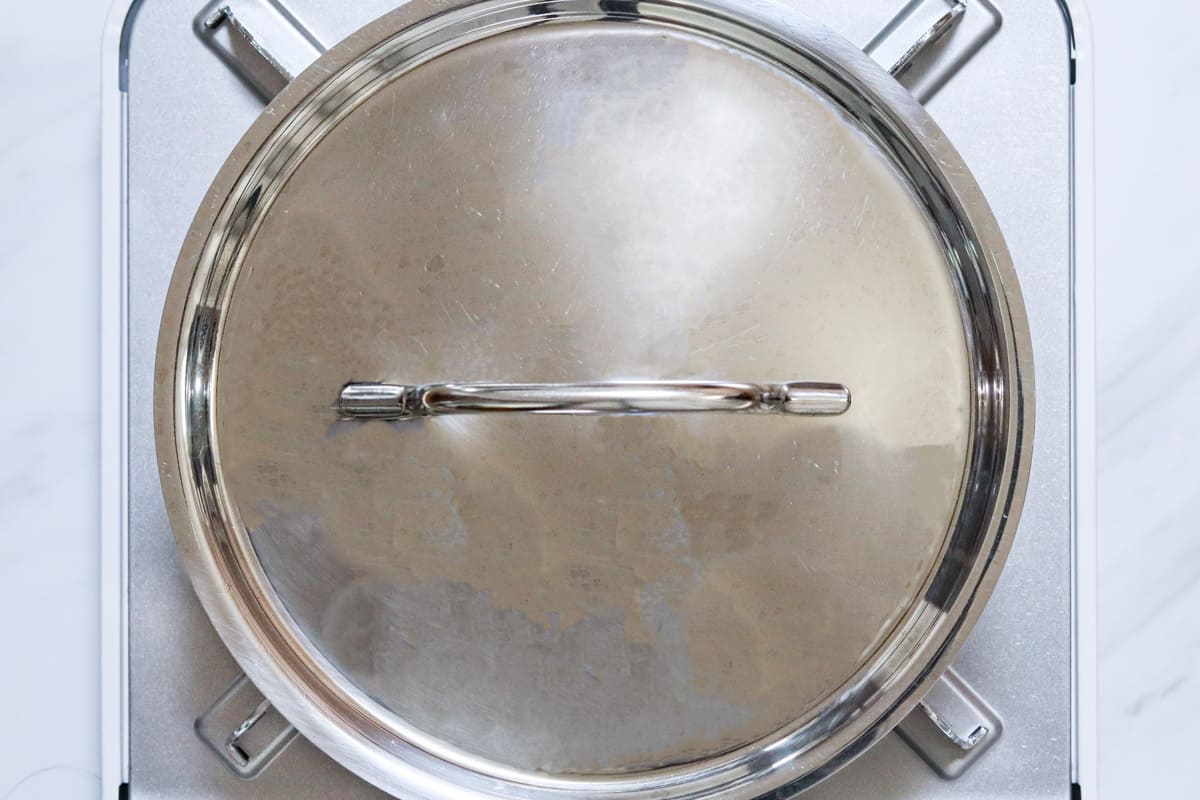
Step 7
Cover the pot and bring it to a boil. Once boiling, reduce the heat to low and cook for 10 minutes, or slightly longer for larger quantities (11 minutes for 4 servings, 12 minutes for 6 servings).
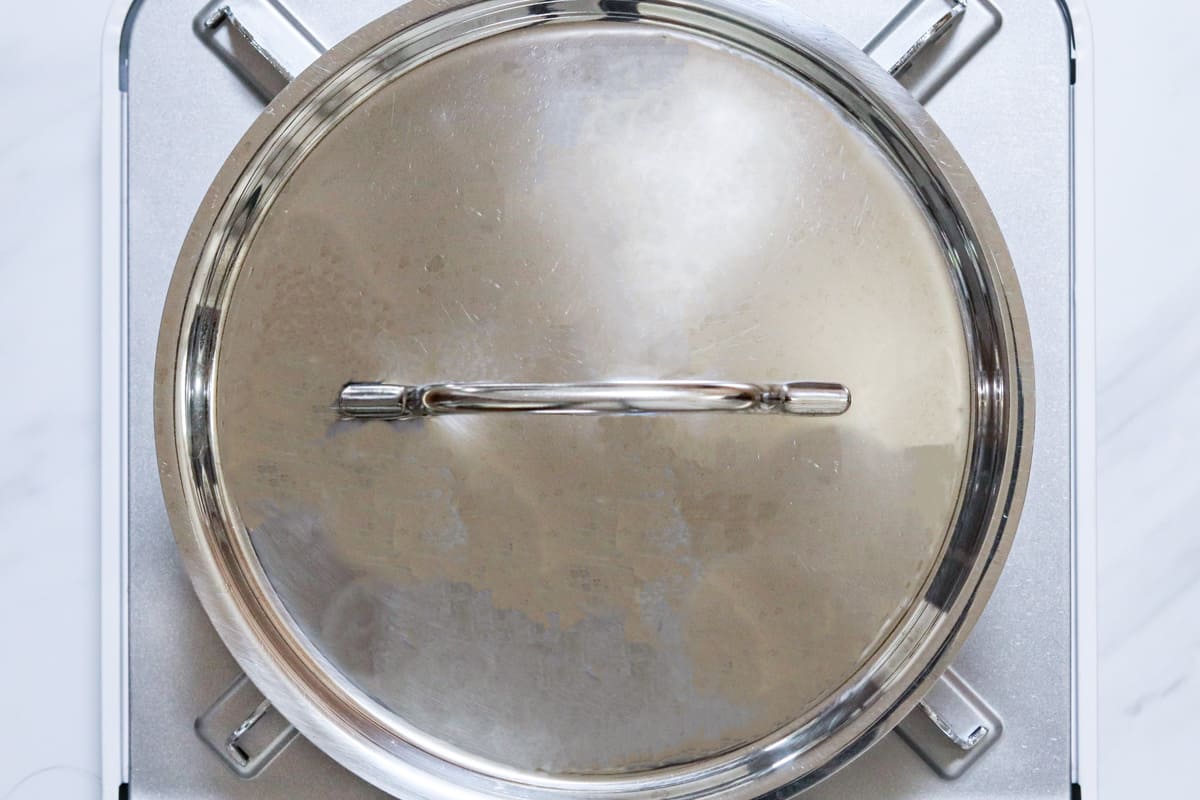
Step 8
Turn off the heat and let it steam for 15 minutes with the lid still on.
To store
You can store it in the refrigerator for up to 2 days.
Tips on how to make
- Soak the whole chestnuts in water or warm water. This process helps soften the outer shells, making them easier to peel.
- Remove the inner skins from the chestnuts thoroughly. By doing this, you can prevent them from appearing darker after cooking.
- Soak the peeled chestnuts in a bowl of water. This will remove any harsh aftertaste from the chestnuts. If the water becomes cloudy, replace it with fresh water.
If you try this recipe, I’d love to hear what you think. Please consider leaving a review and star rating in the comments below. If you enjoyed it, I’d really appreciate it if you shared it with your friends.
Recipe card
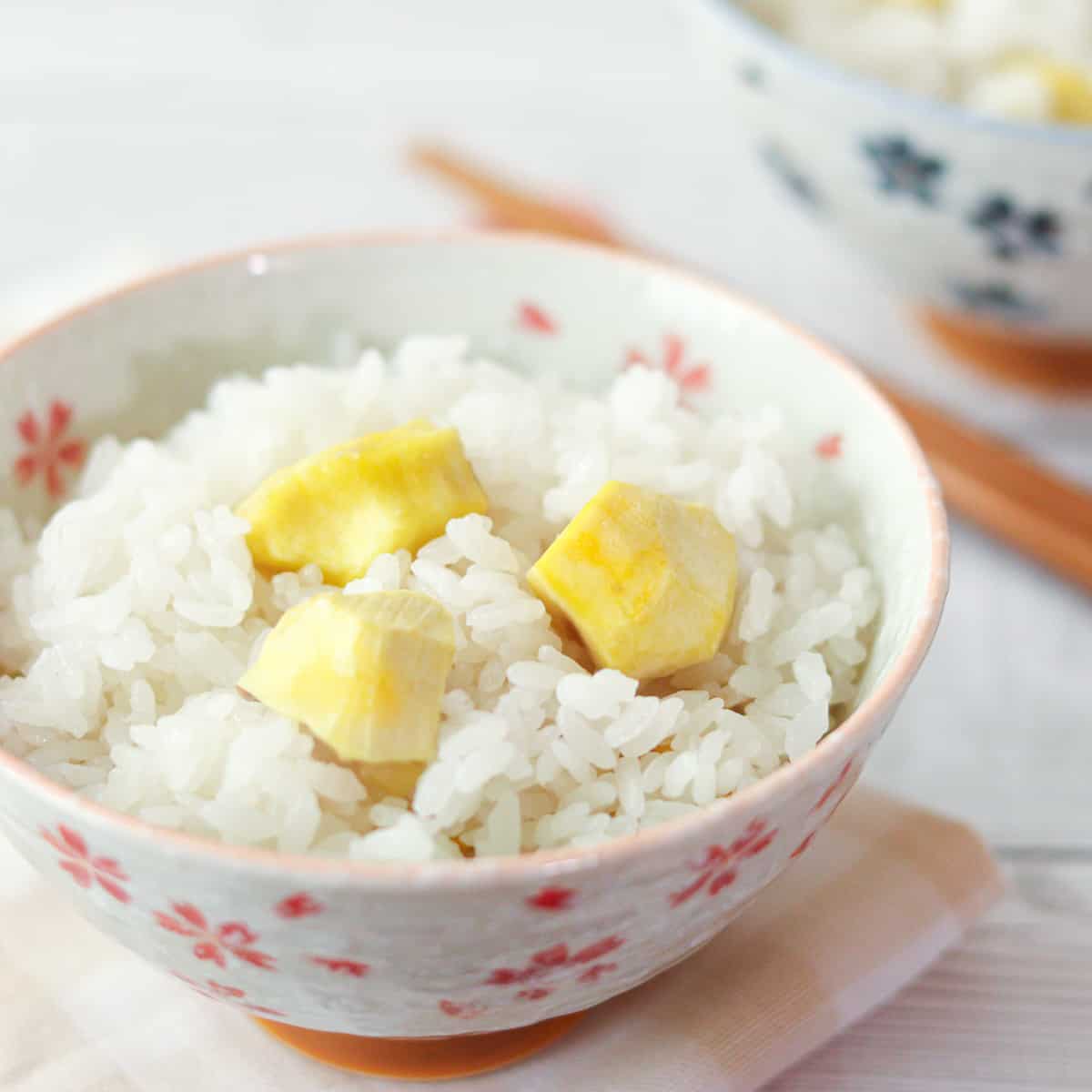
Kuri Gohan (Japanese Chestnut Rice)
Ingredients
- 8 oz whole chestnuts (When using peeled chestnuts or kuri no kanroni, adjust the amount of whole chestnuts to 70%.)
- ¾ cup Japanese short-grain rice (1 rice cooker cup for 2 servings. If you replace 20% of it with Japanese glutinous rice, the grains will become stickier, resulting in a softer and chewier texture.)
- ⅚ cup water (for the rice)
- ½ Tbsp sake
- ½ tsp salt
Instructions
- Soak whole chestnuts in water for at least 1 hour, or in warm water at around 122℉ (50℃) for 20 minutes.
- Cut off the bottom part of the chestnuts and peel the outer shells.
- Remove the inner skins from the chestnuts thoroughly with a knife. Fill a bowl with water and place the peeled chestnuts in it. Soak them for 30 minutes, changing the water when it becomes cloudy.
- Place a sieve over a bowl, add rice, and rinse it with water (not listed in the ingredients). Repeat this process several times, changing the water each time.
- Soak the rinsed rice in water (as specified in the recipe) in a pot for at least 30 minutes.
- Add sake and salt to the pot and mix. Cut the chestnuts into bite-sized pieces and place them evenly on top of the rice.
- Cover the pot and bring it to a boil. Once boiling, reduce the heat to low and cook for 10 minutes, or slightly longer for larger quantities (11 minutes for 4 servings, 12 minutes for 6 servings).
- Turn off the heat and let it steam for 15 minutes with the lid still on.
Notes
- If you are using peeled chestnuts or kuri no kanroni (Japanese candied chestnuts), start from step 4.
- You can store it in the refrigerator for up to 2 days.

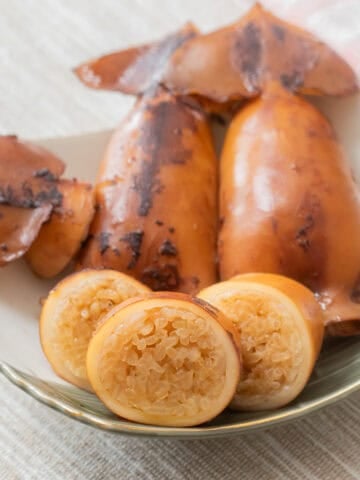

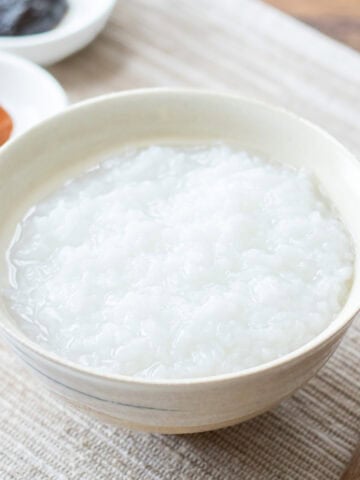
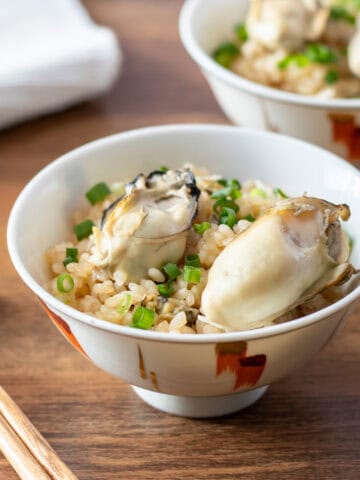
Leave a Rating and a Comment